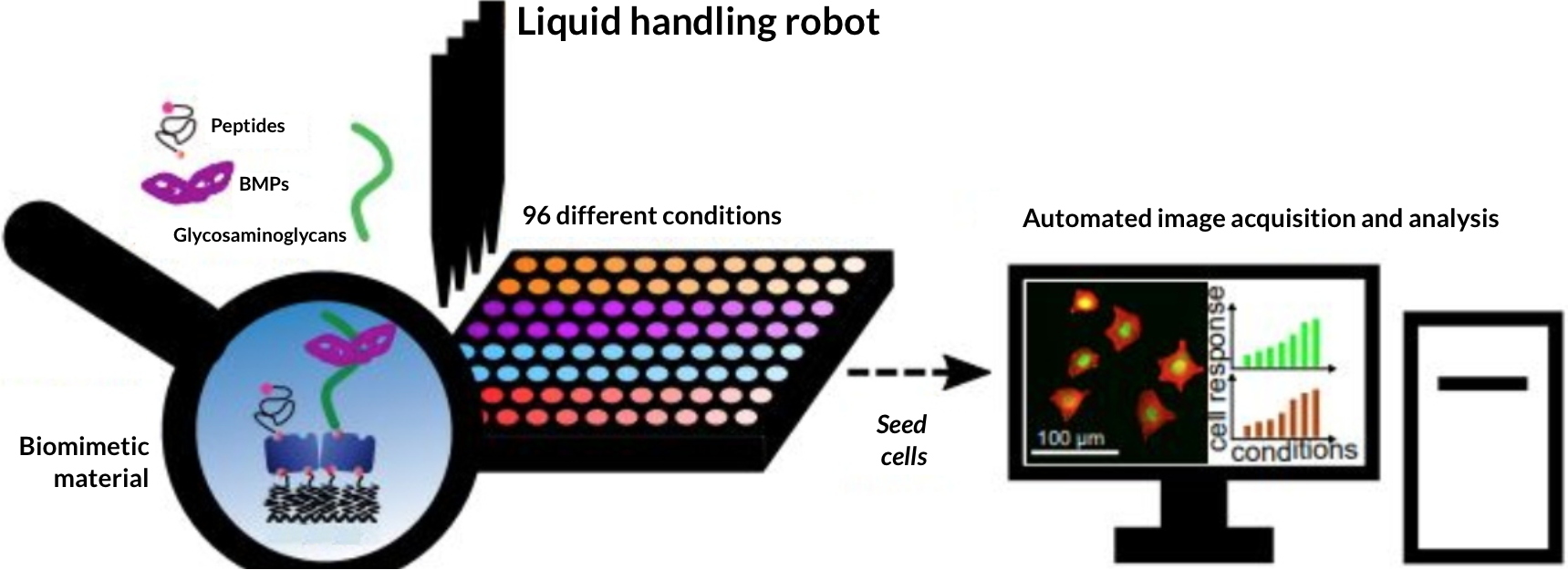Adhesion and cell response tests to growth factors are widely used to understand the behavior of cells, their differentiation and their dysfunctions, which are indicative of many pathologies such as cancer. These tests are generally performed on glass plates composed of 96 "wells" inside which cells are stimulated by different growth factors in solution. Scientists from the Biomimetism and regenerative medicine team within the Biosanté laboratory (CNRS-CEA-INSERM-Université Grenoble Alpes) have shown that it is possible to conduct even more realistic tests with growth factors no longer in solution, but expressed on the surface of biomimetic materials produced by self-assembly. These biomaterials, which truly mimic the cell environment, are assembled step by step by a very time-consuming manual pipetting. The possibility to manufacture such test platforms in an automated way would be a huge asset for cell biology.
In this context, the scientists have just developed, in collaboration with researchers at the Materials and Engineering Physics Laboratory (CNRS-University of Grenoble Alpes) and the Interdisciplinary Physics Laboratory (CNRS-University of Grenoble Alpes), a fully automated protocol to functionalize glass multi-well plates with different biomimetic materials deposited individually in each of the wells by a liquid handling robot. The characterization of the cellular response can then be carried out thanks to an image acquisition and analysis system also automated. This protocol was tested on the effect of heparan sulfate, a polysaccharide present in the extracellular medium of animal tissues, on the bioactivity of bone morphogenic proteins. This tool has proven to be extremely precise and efficient to study the impact of many parameters (up to 96 different factors) on the cellular response. The ability to fabricate these complex biomaterials in the standard 96-well plate format using a robot allows for a complexity, reproducibility and richness of assays unattainable by even an experienced user. These results are published in the journal
Applied Materials and Interfaces.

Illustration of the automation protocol for the construction and use of cell biology test platforms based on self-assembled biomaterials. .
© Elisa Migliorini